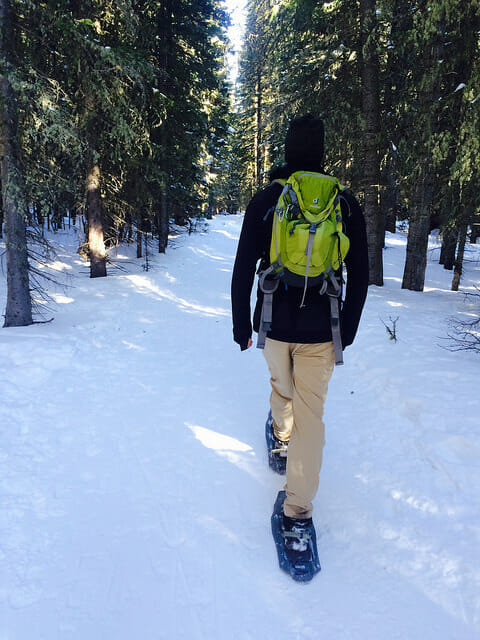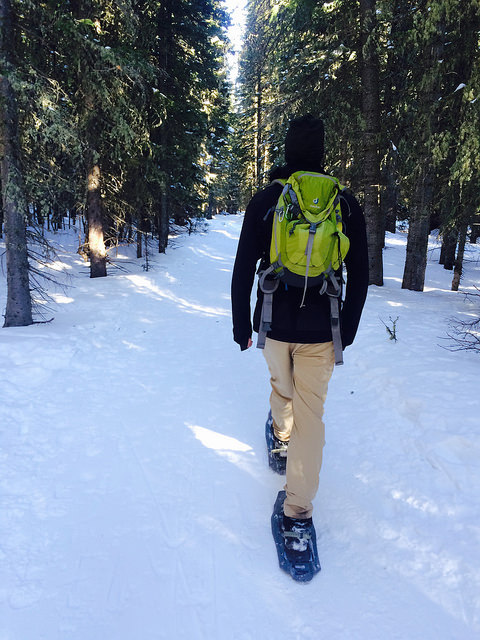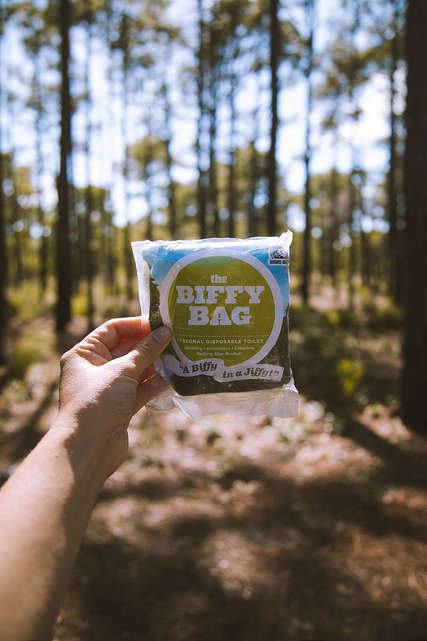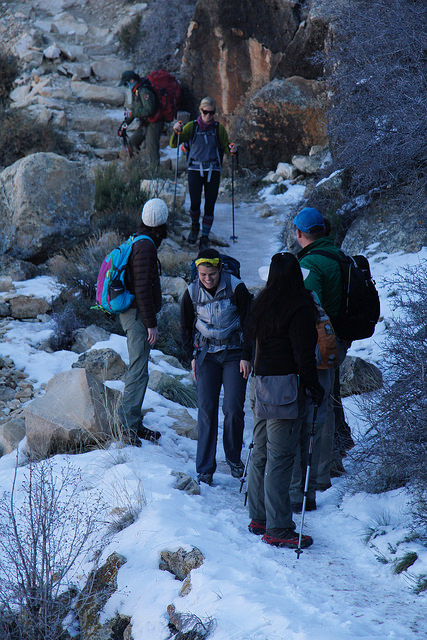Skills & Techniques
Five Critical Skills for Traveling Into the Snow


1. Plan Ahead and Prepare — traveling in snow presents a number of unique risk management and impact prevention considerations. Take the time to evaluate your snow travel gear kit and activity plan with these basic questions in mind. Click here for a more complete list of gear and questions:
- What is your method of travel— ski touring, snow shoes, boots with micro spikes, fat bike, snow machine?
- Does your route require traveling through avalanche terrain (what is avalanche terrain?)— and if so, do you have the gear and know how to use it?
2. What’s Under the Snow? While snow is a surface that is resistant to impacts (aka, it’s a durable surface), the ground cover underneath that snow may be fragile and not resistant to impacts from human activity. Stick to trails if the snow covering the ground is less than 6 inches deep (15cm).

3. Changing Trail Conditions — trail conditions often change quickly in snowy, high traffic areas. Be prepared that the snow-covered trail encountered on the way up has now become an icy, muddy, luge track on the way down. Muddy trails are durable surfaces so take it slow, use those hiking poles for support, and remember to walk through the middle of the trail to reduce trail widening.
4. Disposal of Human Waste— Snow does not contribute to the decomposition of solid, human waste (poop!). Burying human waste in the snow simply hides the waste until the snow melts, resulting in potential ecological and social impacts for future visitors to encounter. The best way dispose of human waste in snow is to using a WAG Bag, one of the many products that allows one to carry out human waste in a sanitary and socially accepted way. Also, it’s cold outside so that human waste will end up freezing inside of the bag making it even easier to pack out.

5. Be Courteous to Other People — If you are snowshoeing or snow biking, it’s good to remember that uphill skiers and split-boarders may create their own trails called skintracks. It is courteous to stay out of those tracks. If following the same route as these tracks, hike or bike parallel to this set of tracks. Similarly, if you are a skier or snowboarder, skiing back down the hiking trail can be very dangerous for snowshoe users and bikers. If you must ski out on the hiking trail, ski parallel to these hiking trails to give courtesy to non-skiers.

Related Blog Posts
Let’s protect and enjoy our natural world together
Get the latest in Leave No Trace eNews in your inbox so you can stay informed and involved.


